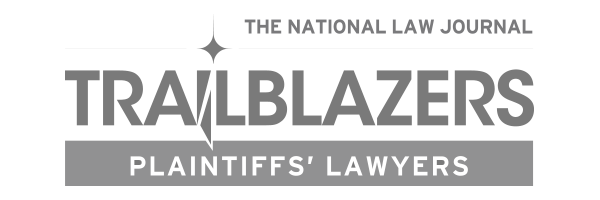In April 2002, attorneys representing 24,000 Enron employees against Enron and other parties filed an amended complaint in the United States District Court, claiming the company recklessly endangered their retirement funds, causing some employees to lose hundreds of thousands of dollars almost overnight.
RECENT DEVELOPMENTS
Please access the documents below for additional information:
Note: Notices of the proposed settlement and proposed allocation mailed to class members answer common questions about the settlements and allocation. As explained in those notices, before the settlement becomes final several issues have to be resolved by the Court consistent with the terms of the Settlement Agreements.
1. Memorandum in Support of Proposed Settlements and Allocation (without attachments)
2. Preliminary Approval Order for Proposed Settlements
3. Preliminary Approval Order for Proposed Allocation
4. Mailed Notices of Proposed Settlements and Proposed Allocation
5. Publication Notice of Proposed Settlements
6. Settlement Agreement with the Estate of Kenneth L. Lay
7. Settlement Agreement with Jeffrey K. Skilling
August 18, 2006 - A distribution of some of the settlement moneys recovered in this litigation has commenced and will continue over the coming weeks.
CERTIFICATION
June 7, 2006 - The United States District Court in Houston has certified two classes in the litigation for trial on behalf of all persons who participated in the ESOP and Savings Plan during January 20, 1998 through December 2, 2001, appointed sixteen persons as the Class Representatives, and confirmed that Co-Lead Counsel and others are the attorneys for the classes.
To review the Court's Opinion and Order Certifying Tittle Classes, click here.
April 20, 2006 - The United States District Court in Houston has granted preliminary approval of a proposed partial settlement with the Northern Trust Company for $37.5 million cash. The proposed partial settlement is on behalf of all persons who participated in Enron's ESOP and Savings Plan during the period of January 1, 1995 to December 2, 2001.
December 20, 2005 - The United States District Court in Houston has granted final approval of a proposed partial settlement with Arthur Andersen LLP and David B. Duncan (“Andersen”), who allegedly breached their fiduciary duties by violating the Employee Retirement Income Security Act of 1974 and for negligence, in the amount of $1.25 million (less attorneys’ fees and costs). The Partial Settlement is on behalf of all persons who were participants or beneficiaries in the Plans during the period from January 1, 1995 through the Effective Date of the Settlement (“Class Period”).
Click the following link to view the Court's Order of Final Judgment and Dismissal.
September 12, 2005 - The United States District Court in Houston has granted final approval of a proposed partial settlement with Enron Corp.
Click the following link to view the Court's Order of Final Judgment, Dismissal, and Bar Order.
August 4, 2005 - The United States District Court in Houston has granted preliminary approval of a proposed partial settlement with Enron Corp., for an allowed claim in Enron's bankruptcy proceedings of $356.25 million. The proposed partial settlement is on behalf of all persons who participated in Enron's ESOP, Savings Plan and Cash Balance Plans during the period of January 21, 1998 to December 2, 2001.
May 24, 2005 - The United States District Court in Houston has granted final approval for the $85 million partial settlement on behalf of all participants in Enron's ESOP, Savings Plan, and Cash Balance Plan during the period January 1, 1995 through June 7, 2002.
The Court approved the settlement despite the strenuous objections of certain defendants who are not covered by the settlement, including Kenneth Lay, Jeffrey Skilling, and the Northern Trust Company. The litigation will continue against those defendants.
Before any monies are distributed to the class, several additional procedures must occur. The first is the resolution of a proceeding that will determine whether the settling defendants are entitled to the full $85 million in insurance coverage that is being used to fund the settlement. Second, any appeals by the non-settling defendants must be addressed before the settlement is finalized. Resolving those matters could take many months.
Class Counsel File Plan of Allocation for $85 Million Settlement
June 30, 2004 - In accordance with the court's May 31, 2004 order that preliminarily approved a partial settlement of the Enron ERISA litigation for $85 million, class counsel have filed a plan of allocation that, if approved by the court, will be used by the settlement administrator to calculate the amount each member of the settlement class will receive from the settlement. The plan of allocation will be considered by the court as one aspect of the approval process.
Court Grants Preliminary Approval of $85 Million Partial Settlement
May 31, 2004 - the United States District Court in Houston granted preliminary approval for an $85 million partial settlement. The proposed partial settlement is on behalf of all participants in Enron's ESOP, Savings Plan, and Cash Balance Plan during the period January 1, 1995 through June 7, 2002.
The settling defendants are insured under two fiduciary liability insurance policies. The $85 million settlement fund represents the full amount of the coverage provided by those fiduciary insurance policies for most of the remaining defendants. The settlement excludes Enron, Kenneth Lay, Jeffrey Skilling, and the Northern Trust Company. The litigation will continue against them. Those non-settling defendants are objecting to the use of the $85 million policy proceeds for the purpose of this settlement.
The Settlement Agreement and other papers filed with the Court that were considered by Judge Harmon are attached on the right-hand side of the page. They include two notices of the proposed settlement. One was mailed to participants and beneficiaries of the ESOP, Savings Plan, and Cash Balance Plan who were members of the settlement class. The other was published in several newspapers, including the Houston Chronicle and the Wall Street Journal.
The mailed notice answers questions that class members typically have about the settlement. As explained in that notice, before the settlement becomes final several issues have to be resolved by the Court consistent with the terms of the Settlement Agreement.
Attachments:
1. Mailed Notice of Partial Class Action Settlement
2. Published Notice of Partial Class Action Settlement
3. Order Preliminarily Approving Partial Settlement
4. Amended and Restated Class Action Settlement Agreement
September 30, 2003 - Judge Harmon today issued an order on the many Motions to Dismiss that have been pending over the past year.
July 24, 2003 - Court Preliminarily Approves Settlement with Andersen Entity
The Court preliminarily approved a settlement with Andersen Worldwide Societe Cooperative, the Swiss umbrella entity for Andersen’s partnerships around the world. AWSC is now in receivership. This is the first settlement reached in the consolidated actions. The amount of the settlement, $40 million, will be divided between the ERISA and securities plaintiffs at a later date if the Court gives its final approval for the settlement. The proposed settlement does not resolve any of the claims against Arthur Andersen, LLP, the United States entity that audited Enron. Notification of the proposed settlement is being mailed and published to persons who were participants in the ERISA plans at issue in the litigation. That notice describes the proposed settlement in full.
July 11, 2003 - Court Sets New Case Schedule
The United States District Court in Houston, Texas set a new schedule for the completion of the consolidated cases related to Enron. Those cases include the ERISA litigation and the actions for securities fraud. Under that schedule, unrestricted discovery of documents has commenced, depositions on the merits of plaintiffs’ claims will begin on January 10, 2004, and fact discovery will continue through December 17, 2004. Trial is scheduled for October 17, 2005.
June 16, 2003 - Court Orders Mediation of Claims Against Banks
The Court, together with the Court overseeing Enron’s bankruptcy, ordered the plaintiffs in the ERISA and securities cases to mediate the settlement of their claims against the investment banks before The Honorable William C. Conner, Senior United States District Judge, Southern District of New York. The mediation encourages, but does not require, the parties to settle their claims. The mediation will take place over the coming months on a schedule determined by Judge Conner.
January 28, 2003 - Court Issues Order Delaying Discovery Until Motions Have Been Decided
Earlier this month, class counsel in the ERISA action requested a status and scheduling conference pending the U.S. District Court in Houston's resolution of motions to dismiss and the motion for class certification. Those matters have been fully briefed. Counsel was seeking guidance about the process of discovery and other related matters prior to Court's rulings on those motions.
On January 27, 2003 the Court issued an order indicating that it will permit discovery to go forward in the ERISA case "as soon as the . . . motions to dismiss [in the securities case] have been resolved." This is a continuation of the Court's coordination of discovery in the ERISA case with discovery in the securities case. Discovery in the securities case has been put on hold pending a ruling on the motions to dismiss under the Private Securities Litigation Act of 1995.
That law was passed by Congress to protect corporate executives, accounting firms, and underwriters from "frivolous" securities fraud class actions. Although not applicable to ERISA actions, because of the Court's decision to coordinate the cases, that statutory stay has now had the effect of delaying the prosecution of the ERISA case for many months now.
In its January 27, 2003 Order, the Court indicated that it expects to have rulings on all of the motions to dismiss in the securities case "shortly." When those orders are issued, the Court will then set a status and scheduling conference. It is likely that a new trial date and the associated discovery and motion deadlines will be set at or shortly after that conference.
October 2, 2002 - Hagens Berman Files Class Motion on Behalf of Enron Employees
Hagens Berman has filed a motion for class certification in the Enron Employees Lawsuit with U.S. District Court in Houston. Several Enron employees made declarations in support of this certification, relating their experiences regarding their retirement plans at Enron and after the company’s collapse.
The class certification documents as well as declarations from plaintiffs are available at the Document Center.
October 2, 2002 - Deadline Set for Filing Proofs of Claim in Enron Bankruptcy Cases
The Bankruptcy Court has set October 15, 2002, as the deadline for filing proofs of claim in the Enron bankruptcy cases. As counsel for the proposed classes in the Tittle case, we will file a proof of claim in the name of the Lead Plaintiffs, requesting that the Bankruptcy Court treat it as being filed on behalf of all members of those classes.
This proof of claim will assert the ERISA, RICO and other claims against Enron Corp. as set forth in the First Consolidated and Amended Complaint filed in the Tittle case. In addition, we understand that State Street Bank and Trust Company as the independent Fiduciary for the Enron Corp. Savings Plan will also file a proof of claim pertaining to these claims.
We have been asked by several individuals what, if any, steps they need to take personally to preserve their rights against Enron. We believe that the proof of claim described above will preserve the ERISA and other federal and state claims set forth in the Complaint.
You may, however, have legal claims against Enron Corp other than those set forth in the Complaint. For example, you may have wage, salary, employment, breach of contract or other claims against Enron. You may elect to file a claim with the Bankruptcy Court in connection with any claims you feel appropriate, including the same ERISA and other claims set forth in the Complaint. You may wish to consult another attorney on these matters.
We have prepared a generic proof of claim that you may wish to review in connection with your decision regarding filing an individual proof of claim. It follows this notice and asserts the same ERISA and other claims against Enron as set forth in the Complaint. Each individual, in consultation with legal counsel, should decide whether and how to use the form and/or modify it. If you do use this form, it should be sent directly to the bankruptcy court.
The address, if sent by mail, is:
United States Bankruptcy Court - S.D.N.Y.
Enron Claims Docketing Center
P.O. Box 5104
Bowling Green Station
New York, New York 10274-5104
The address, if sent by overnight courier, is:
United States Bankruptcy Court - S.D.N.Y.
Enron Claims Docketing Center
Mega Case Unit
One Bowling Green
New York, New York 10004-1408
September 30, 2002 - Department of Labor: Enron’s Lay Could Be Personally Liable for Millions of 401(k) Losses
The United States Department of Labor has filed a strongly worded court brief stating that Ken Lay and other Enron executives could be held personally liable for millions of dollars in retirement plan losses.
The brief, filed by the government as part of the litigation against Enron on behalf of company employees and retirees, could have broad implications not only with the Enron litigation, but also with other cases involving mismanagement of 401(k) accounts.
“We applaud the Department of Labor’s brief, and agree with the Department's analysis wholeheartedly,” said Steve Berman, the attorney leading the class-action litigation on behalf of Enron employees and retirees. “We will prove that Lay and his cohorts not only failed to protect the interests of employees, they intentionally misled employees and retirees in convincing them to continue investing in the company stock. They should be held personally liable for their misdeeds.”
According to Berman, Enron leadership, including CEO Ken Lay, had a responsibility to protect the interests of those invested in the 401(k) program, an obligation they abrogated.
“It is only fair that when we prove our case, the Enron officials who pocketed millions be held accountable,” Berman added. “Pictures of mansions and swimming pools grate against our concept of fairness.”
Berman added that when employees attempted to liquidate holdings, many were locked out of trading.
Thousands of current and former Enron employees saw their retirement nest-eggs scrambled.
April 8, 2002 - Attorneys representing 24,000 Enron employees against Enron and other parties filed an amended complaint in the United States District Court.
As directed by the court, the amended complaint consolidates all the individual class-action suits filed over the past six months. The court has also selected Steve W. Berman and Lynn Sarko to lead the case against Enron and the other defendants.
The amended complaint has a number of key additions to the earlier complaints. These include the naming of additional defendants, in particular:
Investment Bankers:
- J.P. Morgan Chase & Co.
- Credit Suisse First Boston Corporation
- Citigroup
Corporate Attorneys:
- Vinson & Elkins, LLP and specific partners
Andersen:
- Arthur Andersen & Co. Worldwide Societe Cooperative
- Arthur Andersen, LLP and specific partners
- UK Arthur Andersen
According to the consolidated complaint, the wrongful conduct which underlies this case was not limited to Houston, but also took place on Wall Street, where Enron’s investment bankers and lawyers helped create, structure and sell the securities which propped up the Enron pyramid.
Indeed, the Wall Street firms named as defendants provided the financial cover, which let Enron grow into the nation’s fifth largest company. In the process, these firms earned hundreds of millions in fees, and much more for lending, derivatives trading and other advice.
The consolidated complaint states that the investment bankers and attorney defendants had extensive dealings with Enron over the years, and participated in multiple offerings and other financial transactions on behalf of Enron and its subsidiaries and affiliates. The suit also states that these investment bankers and attorney defendants had an obligation to review the financial statements and the legal status of Enron and had access to material information concerning Enron’s true financial status and the legality of its conduct.
Some of the investment bankers were actually insiders in the now infamous off-balance sheet partnerships, according to the suit. The suit also alleges that rather than disclose this information, the Wall Street firms and the attorney defendants’ firm were active and critical participants in a far-ranging, multi-layered scheme designed to conceal Enron’s financial condition while they and the Enron insiders profited. Enron and its top executives were able to continue the illusion of profitability, keeping approximately 24,000 Enron employees as investors through the retirement and savings plans. Without the assistance and participation of the high-powered accountants, investment bankers and lawyers, the scheme could not have succeeded.
To stay informed of the developments in the Enron employees’ class action, sign up for Hagens Berman email updates.
Please click on the menu below to read more.
- Publication Notice of Proposed Settlements 12/22/06
- Mailed Notices of Proposed Settlements and Proposed Allocation 12/22/06
- Preliminary Approval Order for Proposed Allocation 12/01/06
- Preliminary Approval Order for Proposed Settlements 12/01/06
- Settlement Agreement with Jeffrey K. Skilling 11/27/06
- Settlement Agreement with Estate of Kenneth L. Lay 11/20/06
- Memorandum in Support of Proposed Settlements and Allocation 11/20/06
- Settlement Distribution Notice 08/16/06
- Co-Lead Counsel Support of Fee Petition 06/09/06
- Class Counsels' Petition for Award of Fees 06/09/06
- Order Certifying Tittle Classes 06/07/06
- Updated Enron Settlement Agreement 04/20/06
- Order of Final Judgment and Dismissal 12/20/05
- Order of Final Judgment, Dismissal, and Bar Order 09/13/05
- Notice of Supplemental Amended Plan of Allocation 08/26/05
- Tittle Class Action Settlement Agreement 07/27/05
- Final Order Approving the Settlement 05/24/05
- Plan of Allocation for $85 Million Partial Settlement 06/30/04
- Mailed Notice of Partial Class Action Settlement 06/03/04
- Published Notice of Partial Class Action Settlement 06/03/04
- Order Preliminarily Approving Partial Settlement 06/03/04
- Amended and Restated Class Action Settlement Agreement 05/26/04
- Memorandum in Support of Tittle Plaintiffs' Motion for Preliminary Approval of Proposed Partial Settlement 05/11/04
- First Amended Consolidated Class Action Complaint 04/08/02
CASE TIMELINE
On Dec. 1, 2006 the court preliminarily approved partial settlements with Jeffrey K. Skilling and the Estate of Kenneth L. Lay as well as the apportionment of the fund previously recovered in the settlement with Andersen Worldwide Societe Cooperative ("AWSC"). The proposed partial settlements are on behalf of all participants in Enron's ESOP and Savings Plan, during the period Jan. 20, 1998 through Dec. 2, 2001.
The proposed settlement with Mr. Lay's Estate provides a $12 million claim that ensures Tittle Plaintiffs will receive a fair share of any assets of the Estate that remain for distribution, if any, after all of the claims against the Estate have been processed.
The proposed settlement with Mr. Skilling provides the Tittle Plaintiffs with benefits that are contingent on the outcome of the criminal proceedings related to his conviction. If his conviction is affirmed on appeal, a Victims' Fund, exceeding $40 million will be administered by Judge Harmon in the consolidated ERISA and Securities cases, with an allocation formula to be determined by the Court at a later date. If his conviction is overturned on appeal, the Tittle Plaintiffs will receive $2.5 million in cash.
The proposed allocation of the $25 million AWSC settlement fund provides that 15 percent of the fund ($3.75 million) will be paid to the Tittle Plaintiffs. The settlements provide that both Mr. Skilling and Mr. Lay's Estate will dismiss their appeals of the $85 million settlement previously approved by the Court, which will allow the distribution of those funds. The settlements also preserve claims that participants have through the securities litigation. Should the Court grant final approval to the settlements and the allocation, the Tittle ERISA litigation will come to a close and the remaining funds that have been created due to former settlements will be distributed.





